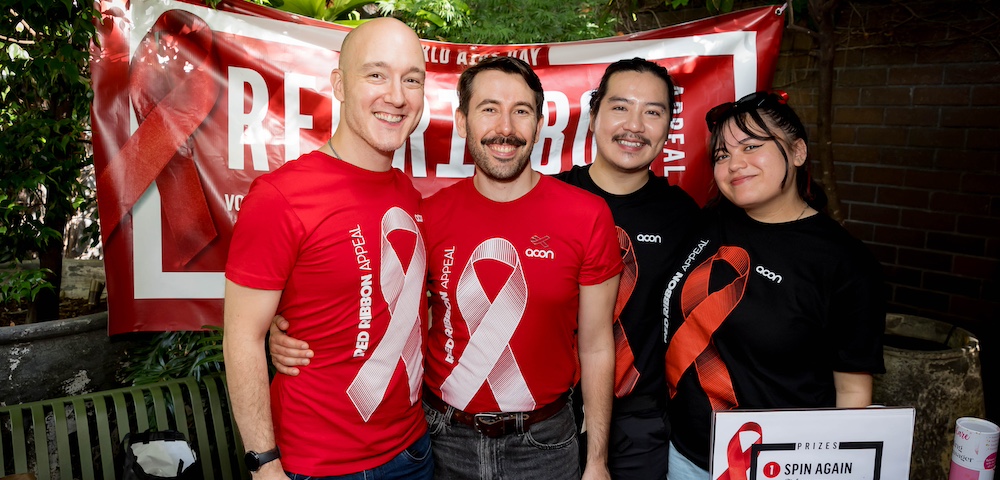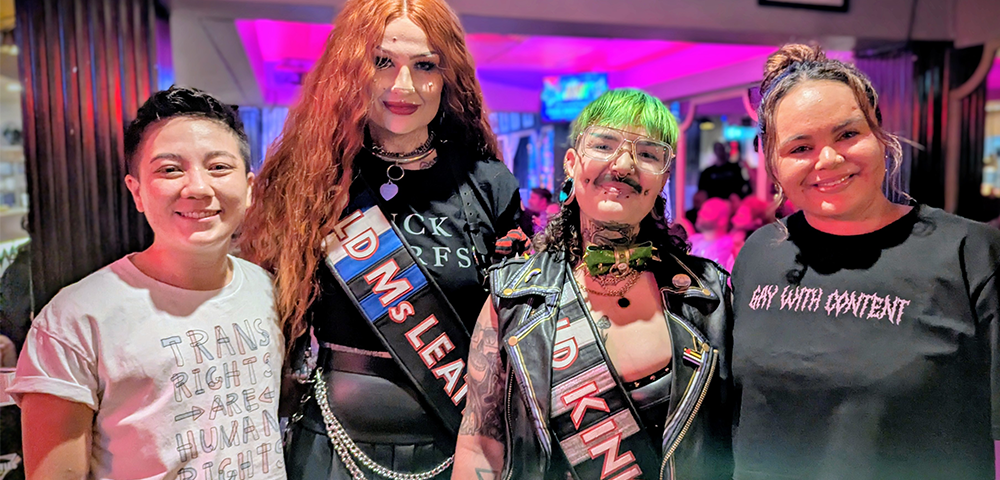
What it’s like navigating HIV when you’re in a serodiscordant relationship

Serodiscordant couples – where one person is HIV positive, the other negative – are among the most literate when it comes to tackling HIV. John Voutos reports.
***
Travis Atkinson, 35, and his partner have been together for almost two years. They face numerous obstacles not faced by regular couples. This is because they are in a serodiscordant or ‘mixed-status’ relationship.
That is, Atkinson is HIV-positive while his partner is HIV-negative.
Atkinson, a strong advocate for people living with HIV (PLHIV) in Adelaide, says he has been living with HIV for 17 years.
“My previous partner and I of 15 years were diagnosed together,” he says.
“In that time, I never thought I would ever have another partner, let alone the accepting HIV-negative partner I have now.
“I approached my current partner in the beginning with a handful of health resources. He was perfectly understanding of my situation. Now, I’m in my first serodiscordant relationship.”
In 2017, it was estimated that there were 27,545 people living with HIV in Australia, last month’s surveillance report by UNSW’s Kirby Institute shows.
Of these, an estimated 89 per cent had been diagnosed, 78 per cent were receiving antiretroviral therapy (ART), and 74 per cent had a suppressed viral load, exceeding the UN target of 73 per cent for the first time.
HIV cases in NSW continue to plummet to record lows, with experts attributing the rapid uptake of pre-exposure prophylaxis (PrEP) as one of the key factors.
ACON’s Associate Director of Policy, Strategy, and Research, Brent Mackie, advises that serodisco couples often have open and honest discussions to make choices that feel right for both of them.
He says ACON’s workshops facilitate these discussions by demystifying “misconceptions towards PLHIV on treatment who have an undetectable viral load (UVL)” through the undetectable = untransmittable (U=U) movement.
The U=U movement promotes the proven science that shows passing on HIV to a partner is impossible with a sustained UVL through effective treatment. An undetectable viral load (UVL) means that through treatment the virus can no longer be detected in a person’s blood, and it is impossible for them to transmit HIV.
ACON partners with Positive Life NSW and the Institute of Many (TIM) with aims to “eliminate prejudice, isolation, stigma, and discrimination” for PLHIV, Mackie says.
“Stigma doesn’t just affect people living with HIV, it affects us all.”
Along with being an “open book”, Atkinson is a long-term member of TIM, Australia’s largest grassroots movement for PLHIV.
Nic Holas, co-founder of TIM, says their movement is helping to empower PLHIV like Atkinson to live unabashedly and resiliently.
“We have spent decades surviving HIV stigma and discrimination. We will keep doing that, but we need the rest of the world on our side,” he says.
“We need governments to endorse and promote the U=U message. We need to end HIV criminalisation by improving legal protections. We need HIV-negative people to stop seeing us as ‘risky’ and start seeing us as equals.
“We can’t keep doing all the heavy lifting.”
David Crawford, 62, reflects on his own experiences as a PLHIV in past serodisco relationships.
“I’ve had HIV-negative partners who were accepting and made well-informed decisions about prevention and treatments,” he says. “Others respond, ‘but I’m not on PrEP’.”
Crawford says PrEP is overkill in the context of undetectability.
“PLHIV using treatment-as-protection (TasP) use antiretrovirals in the same way that PrEP users are,” he says.
“The U.S. community generally accepts serodiscordance more because there’s an awareness of the efficacy of TasP and UVL amongst negative members.”
Crawford adds that HIV stigma is accepted as a norm.
“Eliminating stigma and discrimination isn’t just the responsibility of PLHIV, it’s everyone’s responsibility,” he says.
Atkinson shares a similar sentiment, adding that there are people living with HIV who have endured years of stigma and know that it won’t vanish overnight.
“My partner and his family are very supportive and non-judgmental,” he says.
“They don’t mind my advocacy, but he’s more private around the issue… he likes to keep it within the circle.
“Certain people still assume that my partner is positive by association despite being undetectable since 2007.
“Dating as a PLHIV with a UVL, people on PrEP would still insist on using protection with me. So it was for my peace of mind that I advised my partner use PrEP in the early stages of our relationship, before we later discussed discontinuing it.”
Atkinson adds that he and his partner undergo three to six month maintenance at the GP.
“We don’t limit certain sexual practices and he’s still negative so it’s proof that the science is working,” he says.
“I lived with HIV for six years thinking it could be a potential risk for my partners despite their awareness of U=U.
“My mind wouldn’t let me agree with them. It’s for these six years that I still have to catch up.”









